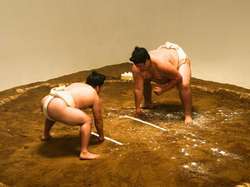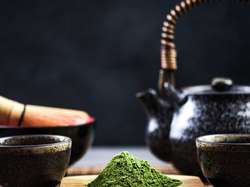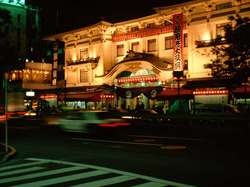Japan's Top Cultural Experiences: From Kabuki Theatre to Tea Ceremonies
Hosted by Dwayne Johnson
Tweet ShareJapan is a country steeped in tradition. A proud “History and Culture of Japan” spans hundreds of years. Japan's diverse development, from traditional ceremonies to classical arts, is striking. One can experience its history and culture through various activities. Kabuki plays are dramatic. Tea ceremonies are contemplative. Matsuri festivals are exuberant. All reveal an understanding of Japan's way of life.
1. Kabuki Theatre: The Heart of Japanese Drama
Probably one of the oldest arts followed in Japan; the same dates back to the Edo period in the early 17th century. Kabuki is a stylized form of drama that has been so appealing to its audiences for its long-time attires and scintillating performances. The shows are a thrilling mix of dance and music. They often tell stories of romance, moral dilemmas, and history. Colorful make-up is vital to actors. It enhances the show's beauty. It also reveals the characters' personalities and emotions.
Where Can You Watch Kabuki in Japan?
-
Kabuki-za Theatre, Tokyo: It's the best place to watch Kabuki. It has a historic vibe in the city's heart.
-
The Minami-za Theatre, which is also situated in Kyoto, is among the oldest theaters for Kabuki in the country. Again, the historical environments of the place create great venues for this art form.
-
Osaka Shochikuza, Osaka: Brilliant is this venue for its Kabuki, which is highly valued.
2. The Art of the Tea Ceremony: A Meditative Experience
The Japanese tea ceremony, or chanoyu, conveys peace, harmony, respect, and calm. This practice, from Zen Buddhism, requires careful preparation and serving of matcha, or powdered green tea. Each movement and gesture in the process shows that depth. A tea ceremony shows quiet reflections and Japan's mindful traditions.
Japan's Best Places to Experience a Real Tea Ceremony
-
The famous Urasenke Chado Research Center in Kyoto studies the tea ceremony. It offers authentic experiences.
-
Happien, Tokyo: Be part of the traditional tea ceremony in this beautiful garden with tranquil surroundings.
-
Jishou-temple, Kyoto: The famous Kiyomizu-dera houses the jishou-temple. It performs a tea ceremony with spectacular views of Kyoto.
3. Ikebana: The Elegance of Japanese Flower Arrangement
Ikebana is a Japanese flower arrangement an art that disciplines the human and natural elements together. It is not merely a floral decoration. Ikebana expresses a plant's beauty. It uses space as a key element. The stems and leaves should be on display, too. The concept of Ikebana is based on harmony, simplicity, and the value of natural beauty. This ideology has its essence in Japanese aesthetics.
Learning or observing Ikebana in Japan:
-
Sogetsu Kaikan, Tokyo: This modern school teaches Ikebana and flower-arranging techniques.
-
Ohara School of Ikebana, Kyoto: This school instructs on the traditional principles of Ikebana. This school also conducts workshops where the students can go on to make arrangements for their compositions.
-
Ikebana International, Multiple Locations: This group holds events to learn about Ikebana.
-
Kadō Senshū, Osaka: This school presents quite a unique concept of Ikebana—joining the modern designs of this ancient technique that provides a new outlook toward it for the modern enthusiast.
4. Sumo Wrestling: Japan’s National Sport with Cultural Roots
Most view sumo as Japan's national sport. It is more than that. It is a symbol. It blends ritual, spirituality, and athleticism. Sumo has a history of almost 1,500 years. It originated from a Shinto ritual to appease spirits and ensure a good harvest. It has become a professional sport. It still has its origins, with elaborate rituals and ceremonies.
Best Places in Japan for Viewing Sumo
-
Ryogoku Kokugikan, Tokyo: Ryogoku Kokugikan is the best known and the venue with the largest capacity for viewing the sport of sumo. This facility is based right in the heart of Tokyo. It is used to host three of the six major sumo tournaments, which take place each year in January, May, and September. Edion Arena, or the Osaka Prefectural Gymnasium, hosts the Haru Basho (Spring Tournament) every March.
-
Osaka Prefectural Gymnasium, Osaka: There is also an accompanying sumo museum displaying traditional sumo wear, information on the history of sumo, and other memorabilia of that nature. Osaka is when the boisterous sumo fans are in full voice and the atmosphere is off the charts.
-
Aichi Prefectural Gymnasium, Nagoya: Host of July Tournament, or Nagoya Basho, one of the most broadly acclaimed sumo ceremonies in the country. The structure's architecture was thoughtful. All gym seats have a clear view of the dohyo. Furthermore, due to the summer season, the heat makes the bouts already blazed and burning.
5. The Spirit of Matsuri: Experiencing Traditional Japanese Festivals
Traditional Japanese festivals, known as matsuri, are colorful and occur throughout the year. Each of them has its customs, performances, and ceremonies. These festivals began in Shintoism. They are timed to thank the gods, mark time, or memorialize events. One should expect a lively, colorful Matsuri festival. It will have parades, traditional dance, and music. It's a great intro to Japanese culture. There feels an emanation of pride, excitement, and communal spirit, like a vibe in the air.
Notable Matsuri Festivals in Japan
-
Gion Matsuri: This is one of Japan's most popular festivals. It usually takes place in July, with a grand procession of traditional floats.
-
Kanda Matsuri Tokyo: In August, a lively dance festival takes place. Everyone, including the spectators, performs the Awa Dance.
-
Awa Odori, Tokushima: Held in May every two years, this is characterized by its spectacular parade of mikoshi, or portable shrines.
Conclusion
Japan's rich artistic legacy and unrelenting tradition unfold in its cultural odysseys. Here, you can feel Japanese history and culture. Experience the drama of Kabuki Theatre, a Tea Ceremony, and the beauty of Ikebana. Or, find the deep spirituality of Noh Theatre. Japan offers experiences for the mind and soul. It is also about the peace of its gardens, the art of calligraphy, and the flavors of its cuisine.
More enriching and pleasant exercise for exploring cultural richness is guaranteed with well-selected Japan Tour Packages and make them learn the fine nuances of the cultural landscape in Japan. Japan's cultural wealth offers unforgettable experiences. Once you land there, you will want to explore more.
Also Read: From Sushi to Soba: Exploring the Best of Japanese Food!
Comments
Attendees (1)
Dwayne Johnson Yes
HostPhotos
Sumo Wrestling: Japan’s National Sport with Cultural Roots
The Art of the Tea Ceremony
Kabuki Theatre: The Heart of Japanese Drama


